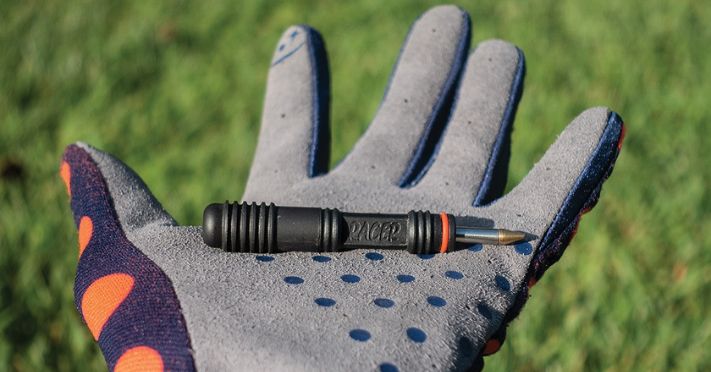By Traece Craig
Like many riders, you may have experienced the unfortunate event of your tubeless sealant not clogging up a large puncture or slice to your tire. The latest tubeless mountain bike tires are generally pretty tough. Even riders that hit the trails aggressively will typically not slice open a tire wide enough for some of the latest sealant technology to do its trick.
Of course, you can always gamble on the odds and rely on a spare tube, super glue, or tire boot to get back to pedaling. However, if those or other creative repair solutions fail, you may be hiking your bike home. For us mountain riders, that might not be a viable option if you’re deep into some backcountry singletrack.
Saving Yourself With A Tubeless Tire-Plug
Even with a proper tubeless setup, carrying something known as a tubeless tire-plug kit is best. To name a few, Lezyne, Slime, Muc-Off, and Stan’s offer kits to tackle tubeless tire troubles. This is a rubber-like strip inserted into a puncture to work with the remaining sealant and bond the puncture shut. From there, air can be added to reinflate the tire.
Unlike the brands mentioned above, Dynaplug has a different approach that could save you from walking your bike.
What Is Dynaplug?
Dynaplug is a small company that was founded in 1991. Since then, it has been dedicated to innovating DIY tubeless tire repair solutions that are easy to store, lightweight, practical, fast, and result in reliable repair.
Although we are highlighting the company’s bicycle options, it’s worth noting that Dynaplug is not limited to repairing any particular tire. The brand’s products branch into the motorcycle, car, ATV, scooter, and even the tractor world. So, how does this work?
Each plug has a proprietary rubber-impregnated cord mounted to a non-abrasive brass tip. From there, the plugs are inserted into a stainless steel insertion tube. The stainless tubes that house the plugs are then threaded into one of Dynaplug’s applicator tools.
Dynaplug’s applicators vary in size, design, material, and even function. Its bicycle repair products start at $25 and go up to $75. For our testing, we mainly used its minimalist option, the Carbon Racer, which is priced at $48. It holds one Megaplug (larger-size plug, bullet tip) with an insertion tube and one regular plug with an insertion tube (pointed tip). The construction of the Carbon Racer tool is made from a strong and lightweight composite.
However, Dynaplug offers models constructed of 6061 aluminum with larger storage space, like the Megapill. The larger Megapill model holds two Megaplugs with insertion tubes, five standard plugs with insertion tubes, a micro knife to cut excess plugs, and a pipe cleaner. Although not covered in this how-to, it’s worth pointing out that there is an option called the Dynaplug Air. This model uses the same plug and a CO2 cartridge to regulate air into a tire.
The Dynaplug Process
The design and materials used are simple and well thought out, while the tool’s process is equally on par. As mentioned above, each applicator has some differences, but the overall technique is the same. From here, we look at the simple steps for tire repair with a Dynaplug Racer.
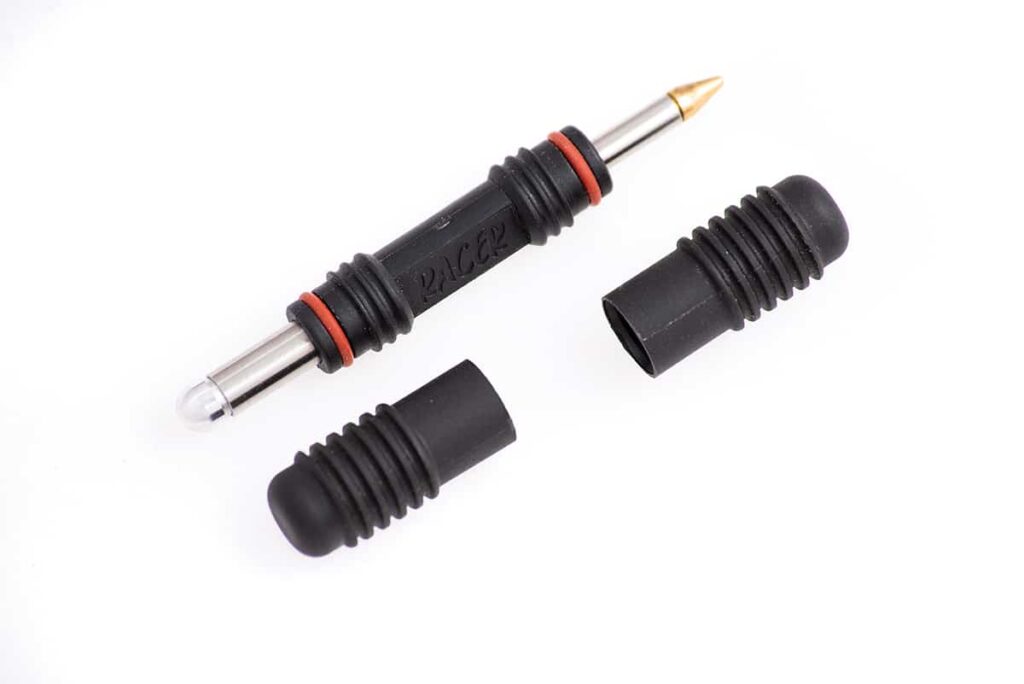
1. At each end of the tool, the end caps are sealed with an O-ring to protect the insertion tubes. One end has a standard plug, while the other has the larger Megaplug.
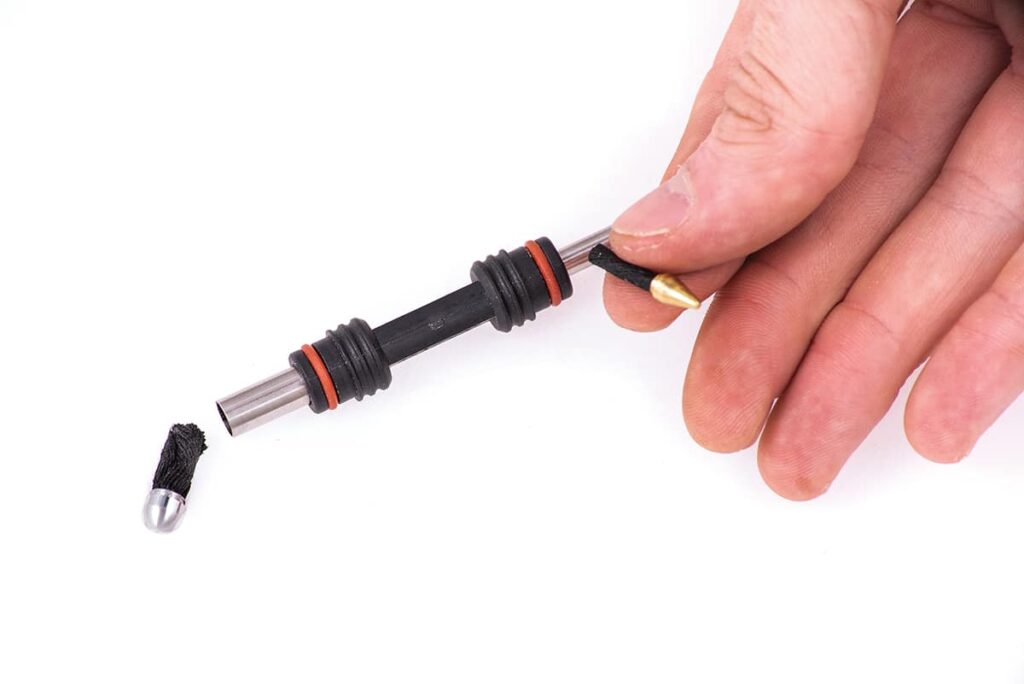
2. If you need to install a new plug into the insertion tube, ensure it’s installed without a lot of force. It’s advised not to cram a new plug into the insertion tube. As Dynaplug recommends, you may want to roll the plug between your fingers to straighten the cord.
3. Load the plug so the metal tip is flush against the end of the insertion tube.
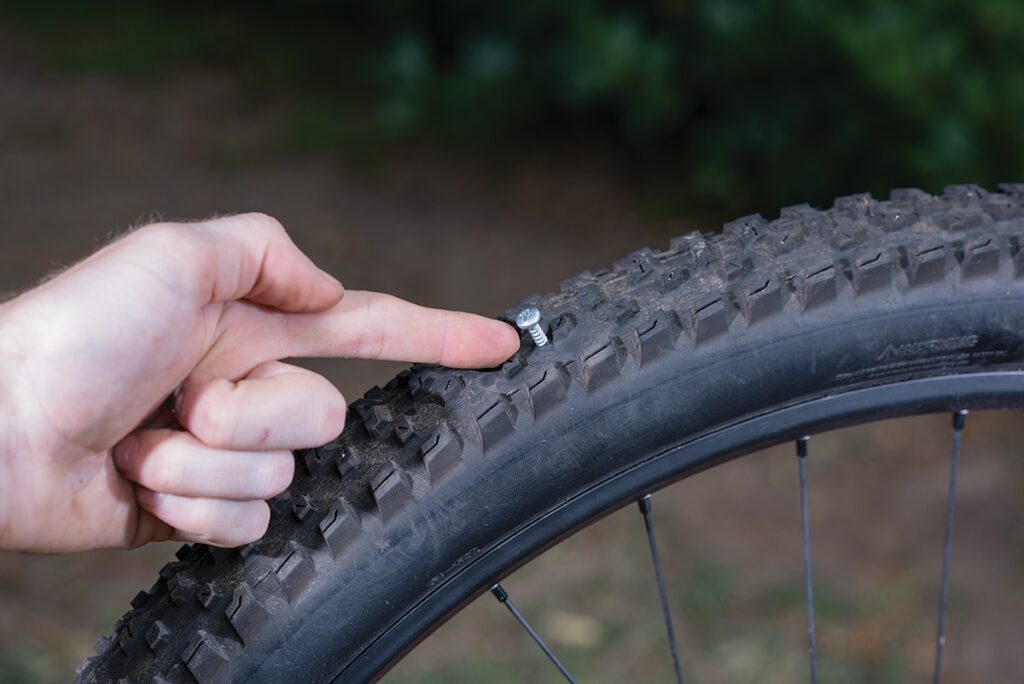
4. If you can see the object protruding from your tire, take note of the angle it’s at before removing it. Once removed, try to insert the plug at the same angle.
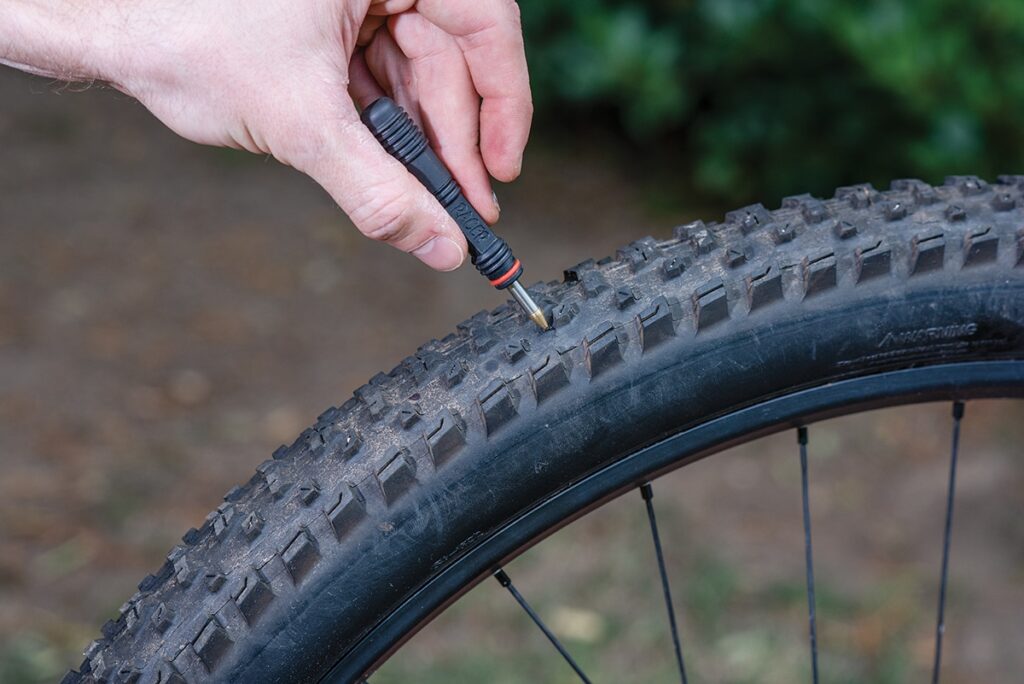
5. Now it’s time to make the repair. Firmly push the insertion tube straight through until the tool is bottomed out. It’s crucial from this point to not twist or turn the tool when inserting the plug. If twisted, this can cause the brass tip to separate from the cord. It’s equally important to fully insert the tool so the plug is placed properly for repair. You may have lost a bunch of air at this point, but there’s no need to fear. If low pressure is making it difficult to insert the plug, you can squeeze the sidewalls together or add a little air to give the tire more structure.

6. Remove the tool to deposit the plug, add air, and spin the tire to spread out the remaining sealant. The tail doesn’t need to be cut; instead, it can be folded and pressed into the tread. From here, the impregnated rubber cord bonds instantly with the tire, and you are ready to get back to hitting the trails.
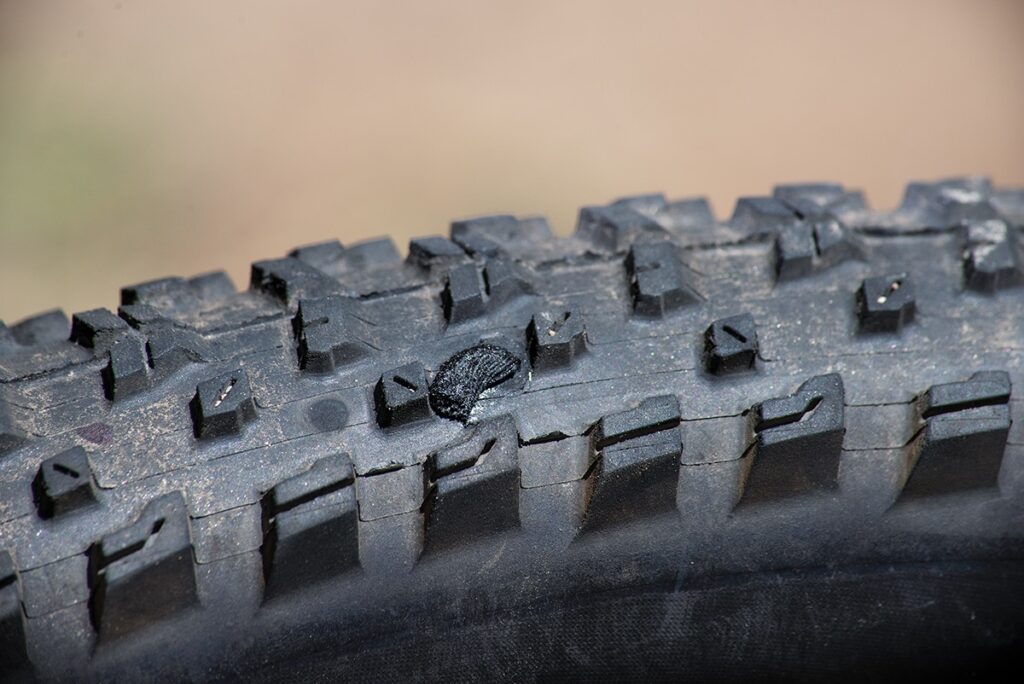
Dynaplug Test Results
A Dynaplug product has been along for countless journeys over the past few years. In some cases, we were glad it was never used; however, we might still be stuck in the mountains without it. When first picked up, the plugs seem sharp and not the first choice to push into a tire. However, Dynaplug repeatedly reports that this is precisely why the tips are made with brass. If a tip breaks free, brass is a soft metal that will wear down over time while remaining non-abrasive to tire rubber. We did have a brass head break-off, and although annoying to listen to, the tire remained sealed from the initial repair.
Not only did it remain sealed, but it lasted another five months of riding until other tires were swapped out. We never needed to use the Megaplugs during our repairs, as the standard plugs did the job for the puncture size we obtained. Each tip is designed to fix a puncture up to 4.6mm in diameter. If the tear is beyond one plug, more plugs can be inserted until sealed. Even though a puncture is frustrating, we have had a successful repair with every repair using the Dynaplug.
If you run tubeless tires, you really need to start carrying a simple tire-plug kit. Given the few years of use, countless tires saved from the garbage, and never worrying about a hike-a-bike situation, we do not doubt that a Dynaplug is a great choice for a tubeless rider’s repair kit.
It offers great advantages like being easy to store, lightweight, practical, and enabling fast repair with no chemical, adhesive, or waiting time, and it’s made in the USA. On the flip side, it can be expensive concerning other kits on the market.
Further, boost your e-bike riding experience by exploring the best electric mountain bikes and some of the best e-bike accessories.
